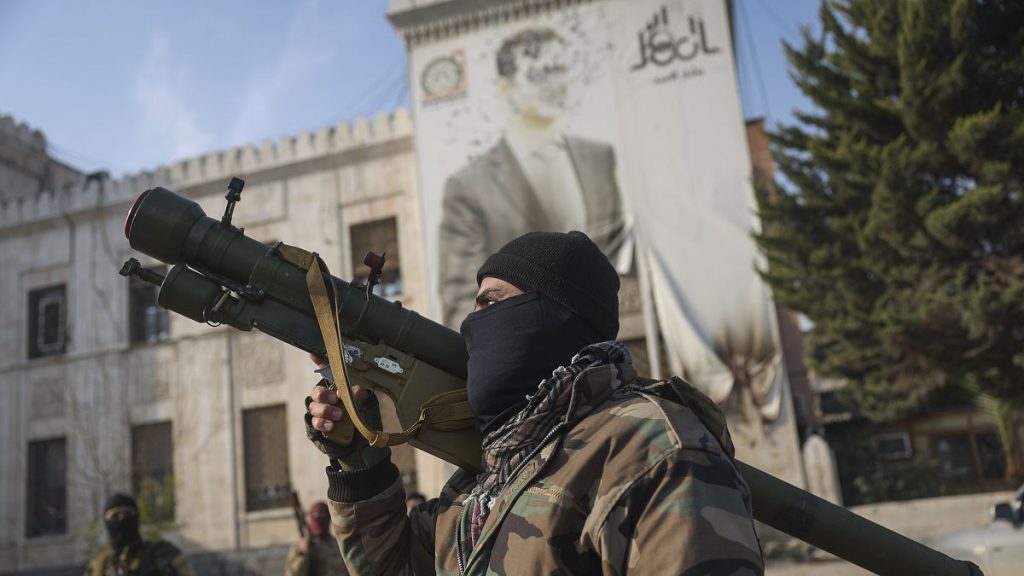The rapid advance of insurgent forces, primarily spearheaded by Hayat Tahrir al-Sham (HTS), has dramatically reshaped the Syrian conflict landscape. Over the past week, HTS-led forces have swiftly captured key cities like Aleppo and Hama, encountering minimal resistance from government troops. This swift offensive has culminated in the seizure of towns on the outskirts of Homs, Syria’s third-largest city, prompting a mass exodus of civilians fearing further escalation. This strategic move places the insurgents in close proximity to Homs and positions them for a potential advance towards Damascus, the seat of President Bashar al-Assad’s power. The fall of Homs would represent a significant blow to the government, as the city serves as a crucial crossroads connecting Damascus to the coastal provinces of Latakia and Tartus, known for their strong pro-Assad sentiment. The unfolding events mark a pivotal moment in the nearly 14-year civil war, raising concerns about the Assad regime’s ability to maintain control.
The insurgent offensive is not confined to the western front. Simultaneously, the Kurdish-led Syrian Democratic Forces (SDF) have gained ground in eastern Syria, advancing into the government-held portion of Deir el-Zour, a strategically important city divided by the Euphrates River. The SDF’s progress also includes securing more territory along the Iraqi border, bringing them closer to the Boukamal border crossing, a vital supply route for Iran-backed fighters supporting the Assad regime. Furthermore, insurgents have seized control of Syria’s only crossing into Jordan, prompting Jordan to close its side of the border, and Lebanon has also closed several of its crossings with Syria. The escalating conflict is unfolding on multiple fronts, placing immense pressure on the Syrian government and its allies.
The rapid succession of insurgent victories has raised questions about the Syrian military’s capacity to mount a cohesive counteroffensive. While government sources claim to be reinforcing positions in Homs and conducting airstrikes against insurgent positions in Hama province, the effectiveness of these measures remains to be seen. A crucial factor in Assad’s ability to respond is the level of support he receives from Russia, his primary ally. With Russia deeply involved in the war in Ukraine, its commitment to bolstering Assad’s forces is uncertain. The upcoming meeting between the Russian, Turkish, and Iranian foreign ministers in Doha is expected to address the escalating situation in Syria and potentially influence future developments.
The ongoing offensive is having a devastating impact on Syria’s already fragile economy. The Syrian pound has experienced a significant decline against the US dollar, further eroding the purchasing power of ordinary citizens who are already grappling with widespread poverty. The combined effects of the protracted war, Western sanctions, internal corruption, and the economic crisis in neighboring Lebanon have crippled the Syrian economy. The UN estimates that 90% of the population is living below the poverty line, highlighting the dire humanitarian situation. The current offensive threatens to exacerbate this economic hardship, leading to greater instability and suffering for the Syrian people.
The sudden and dramatic shift in the balance of power raises fundamental questions about the future of Syria. HTS leader, Abu Mohammad al-Golani, has declared the Assad regime to be effectively dead, propped up only by external support from Russia and Iran. While the long-term outcome remains uncertain, the insurgents’ rapid gains have injected a new dynamic into the conflict, potentially paving the way for a significant realignment of power. The role that external actors, particularly Russia, will play in shaping the next phase of the conflict remains a key determinant of Syria’s future.
The unfolding events in Syria highlight the complex interplay of internal and external forces driving the conflict. The rapid advance of HTS and other insurgent groups underscores the fragility of the existing power dynamics and the potential for swift and dramatic shifts in control. The involvement of regional players like Turkey and Iran, along with the crucial role of Russia, further complicates the situation. As the conflict enters a potentially decisive phase, the international community faces the challenge of navigating this complex landscape to find a path towards a sustainable resolution. The humanitarian crisis facing the Syrian people adds further urgency to the need for a peaceful solution to the protracted conflict.














